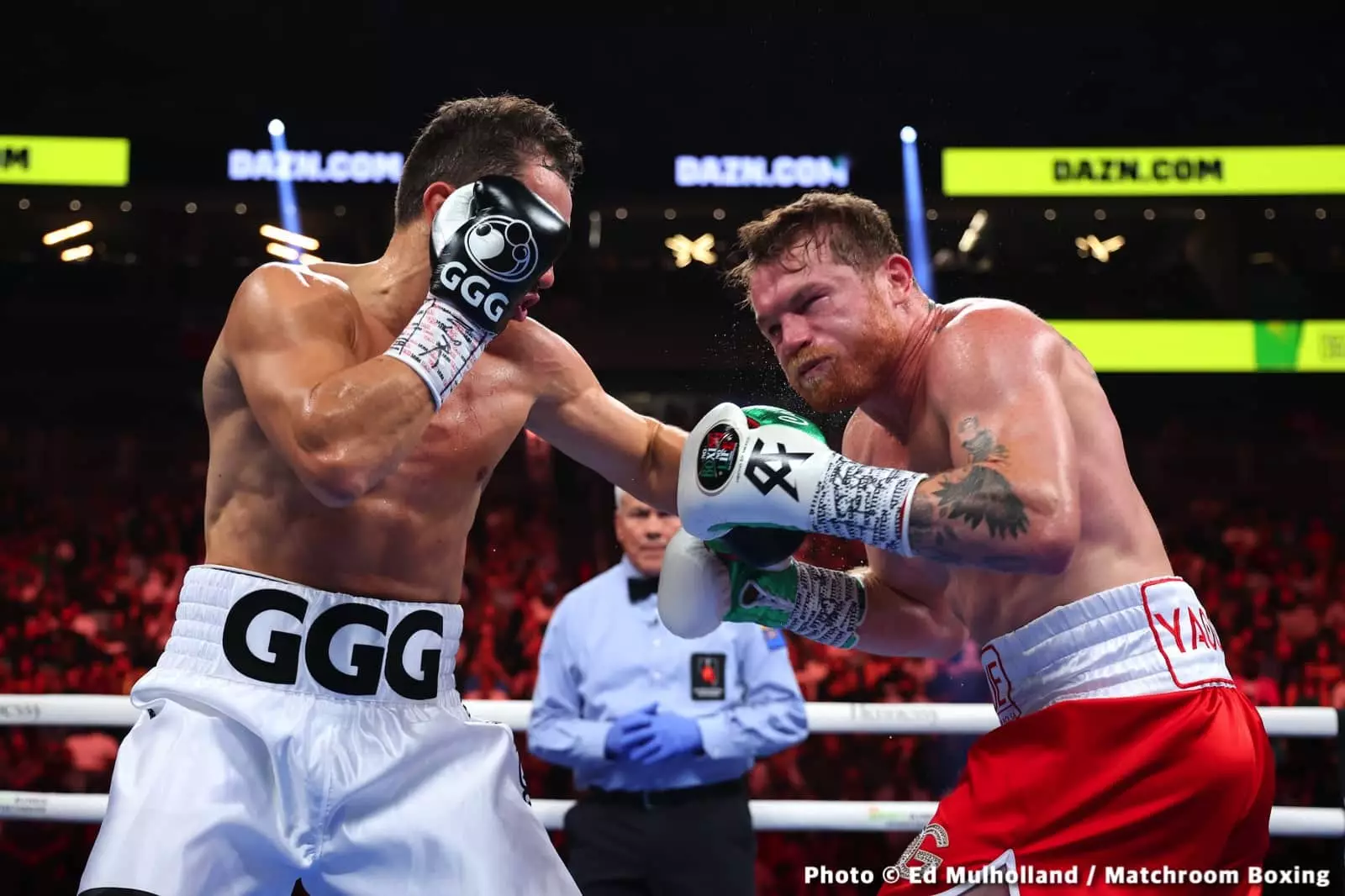When evaluating the upcoming showdown between Terence Crawford and Canelo Alvarez, it’s tempting to idealize Crawford’s talent and capability. After all, he boasts an undefeated record, exceptional boxing skills, and versatility across multiple weight classes. However, a critical analysis reveals that the hype might obscure some fundamental limitations, especially when scrutinizing the power dynamics and physical attributes that determine the fight’s outcome. The myth that Crawford can emulate Gennadiy Golovkin’s strategic aggression and physical dominance over Canelo is fundamentally flawed. Golovkin’s strength, punching power, and natural size at middleweight created a formidable barrier Canelo struggled to surpass, whereas Crawford’s skill set, though impressive, lacks that raw, crushing strength.
The assertion from trainers like Abel Sanchez underscores an essential truth: size, power, and body mass can dictate a fighter’s ability to neutralize an opponent’s offense. Crawford’s current physical condition, still catching up from just moving up in weight, doesn’t possess the same natural force that Golovkin wielded. Golovkin’s ability to stand firm, punch through defenses, and impose his will was rooted in his unique physique—something Crawford has yet to develop. This isn’t a matter of talent alone but a question of biological advantages that some fighters naturally have and others need years to cultivate. Crawford’s approach, characterized more by finesse and volume rather than brute force, might be insufficient against a resilient and powerful Canelo.
Power Deficit: The Core Issue in Crawford’s Challenge
At the heart of Sanchez’s critique is Crawford’s comparative lack of power. Power isn’t just a matter of confidence or throwing punches; it is a fundamental attribute that can dictate the pace and strategy of a fight. Golovkin was, in essence, a walking wall of muscle capable of delivering punishing blows from multiple angles. His presence alone forced Canelo to adapt, and his punching strength often turned exchanges into decisive moments. Crawford, by contrast, has predominantly relied on speed, skill, and volume to unsettle opponents, not brute force.
In Crawford’s last outing at 154 pounds, his inability to punish Madrimov with power exposed a vulnerability. Though technically sound, Crawford’s punches didn’t carry the same sting as Golovkin’s, illustrating a critical gap. Moving up two weight classes to 168 pounds only amplifies this weakness. Unlike Golovkin, whose body was built for the middleweight division, Crawford is still in the process of developing sufficient body strength. Without that, he risks engaging in exchanges where Canelo’s heavy shots could turn the tide. The theory that Crawford’s technical prowess alone can neutralize Canelo underestimates the importance of physical dominance in high-stakes fights.
The Tactical Missteps of Rapid Ascension
Another layer of complexity is Crawford’s hurried move into a weight class where his body has not yet fully adapted. Unlike Golovkin, who spent years honing his craft at a specific weight, Crawford bypassed critical tune-up fights that could have helped him acclimate. Such a rapid ascent suggests a strategic oversight—one that could backfire when faced with a fighter like Canelo, known for his relentless body work and resilient chin.
Canelo’s ability to absorb punishment and counterattack with precision makes him a different challenge altogether. Crawford’s aggressive style, often characterized by volume punching, could leave him vulnerable if Canelo’s counters find their mark. The risk of engaging in a firefight is elevated because Crawford’s current physical state might not be enough to withstand the punishment necessary to break Canelo down. Without the necessary strength, Crawford’s chances rely heavily on elusive movement and technical mastery—traits that may not be enough against a fighter who fights with the brute force Golovkin once employed.
The Reality Check: Power, Size, and the Road Ahead
Ultimately, the critical verdict remains unchanged: Crawford’s technical brilliance, while impressive, doesn’t align with the raw physicality and murderous power Golovkin used to keep Canelo at bay. The notion that Crawford can replicate GGG’s game plan ignores fundamental differences in their physiques, experience, and development. The challenge is not merely about boxing skill; it is about the capacity to impose physical dominance, absorb punishment, and maintain relentless pressure—traits that Golovkin mastered and Crawford has yet to showcase at this level.
While Crawford’s exceptional talent is undeniable, overestimating his physical readiness and power can lead to false optimism. If he cannot develop the natural strength, which takes years of dedicated training, his chances of neutralizing Canelo will dwindle significantly. The fight promises to be a testament to both skill and physicality. However, history and modern analysis suggest that a technically gifted but physically unprepared fighter will rarely succeed against a resilient and power-punching champion like Canelo Alvarez.


Leave a Reply